Hardwood Lumber: Everything You Need to Know
- August 19, 2024
- 0 comment
Hardwood lumber is an important material used in construction and woodworking. It is known for its strength, beauty, and versatility, making it a popular choice for many projects. Hardwood comes from trees that lose their leaves in the fall, and it is typically denser and more durable than softwood. Understanding the different types of hardwood, their benefits, and how to care for them can help you make the best choices for your needs.
What is Hardwood Lumber?
Hardwood lumber comes from deciduous trees, which are trees that lose their leaves every year. These trees include popular species like oak, maple, and cherry. Unlike softwoods, which come from coniferous trees (trees that usually have needles and cones, such as pine and spruce), hardwoods are generally denser and more durable. This means hardwood lumber can withstand more wear and tear, making it a great choice for furniture, flooring, and other products that need to last.
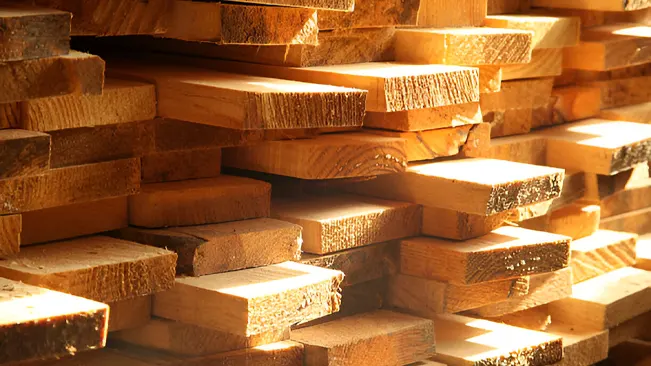
The term “hardwood” can be a bit confusing. While most hardwoods are indeed harder than softwoods, some hardwoods, like balsa, are actually softer than certain softwoods. This is because the hardness of wood depends on the specific species and its growth conditions. For example, some hardwoods have a fine, tight grain that makes them strong, while others may have a more open grain that can be softer.
Hardwood lumber is also known for its beautiful colors and patterns. Each type of hardwood has its unique look, which can add character and charm to any project. Because of these qualities, hardwood lumber is often used in high-quality furniture, cabinetry, and decorative items.
Characteristics of Hardwood Lumber
Hardwood lumber has several defining characteristics that set it apart from softwood:
- Density: Hardwoods are generally denser than softwoods, which means they are heavier and more solid. This density contributes to the strength and durability of hardwood lumber. Denser woods are less likely to dent or scratch easily, making them ideal for high-traffic areas and heavy-duty projects.
- Grain Patterns: Hardwoods exhibit a wide variety of grain patterns and colors, ranging from the straight, uniform grains of maple to the swirling, intricate patterns of walnut. These unique grain patterns are a result of the tree’s growth and structure. The aesthetic appeal of hardwood grain is a major reason why it is often chosen for furniture, flooring, and decorative items.
- Workability: While many hardwoods can be challenging to work with due to their density, they can also hold intricate details well. This makes them suitable for fine woodworking, such as carving and turning. Hardwoods can be sanded, stained, and polished to achieve a smooth, beautiful finish.
- Stability: Hardwoods tend to be more stable than softwoods, meaning they are less likely to warp, twist, or shrink when exposed to changes in humidity and temperature. This stability is important for maintaining the structural integrity and appearance of wood projects over time. Hardwoods are less prone to warping and cupping than softwoods, making them a reliable choice for furniture and construction.
- Acoustic Properties: Some hardwoods, such as maple and rosewood, have excellent acoustic properties that make them ideal for musical instruments. The density and grain structure of these woods can enhance the sound quality of guitars, violins, and other stringed instruments.
- Appearance: The wide range of colors, grains, and textures in hardwood lumber allows for a variety of aesthetic possibilities. From the rich, dark tones of walnut to the light, creamy hues of maple, hardwoods offer a natural beauty that can enhance any interior design or woodworking project.
These characteristics make hardwood lumber a popular choice for high-quality furniture, flooring, cabinetry, and other applications where strength, durability, and beauty are important factors.
Types of Hardwood Lumber
There are many species of hardwood, each with its own unique properties and uses. Here are some of the most common types of hardwood lumber:
Oak
Oak is one of the most popular hardwoods due to its strength and durability. It comes in two main varieties: red oak and white oak. Red oak has a warm, reddish tone and is often used in furniture, flooring, and cabinets. White oak is slightly more durable and water-resistant, making it a great choice for outdoor furniture and boat building.
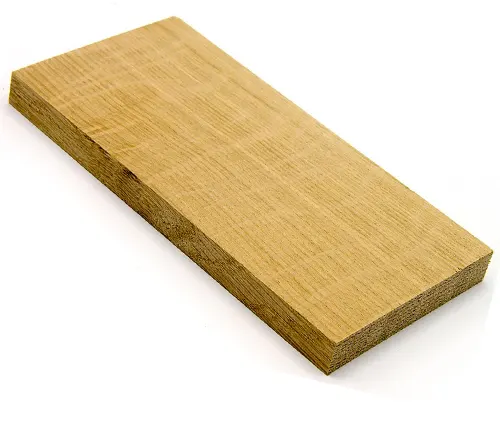
Maple
Maple is a dense hardwood known for its fine, even grain. It is often used in cabinetry, flooring, and kitchen items like cutting boards. Maple is resistant to wear, which makes it a good choice for high-traffic areas. Its light color can brighten up a space, and it can be stained to achieve different looks.
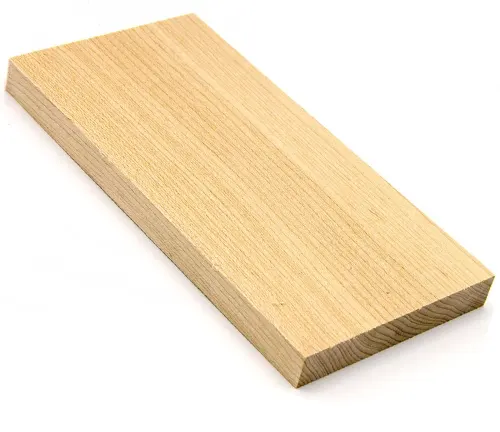
Cherry
Cherry wood is highly valued for its rich, warm color that deepens over time. It has a smooth grain that gives it an elegant appearance, making it a favorite for high-end furniture and cabinetry. Cherry is also easy to work with, allowing for detailed carvings and designs.
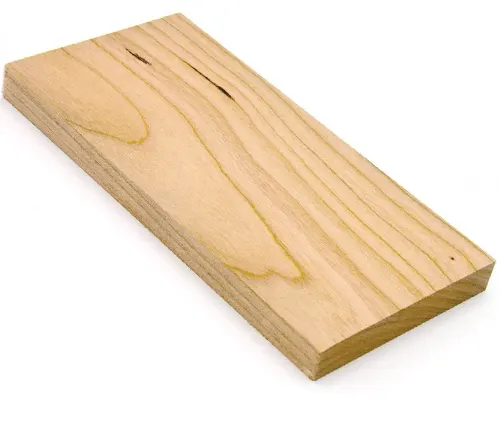
Walnut
Walnut is known for its dark, rich color and striking grain patterns. It is often used in fine furniture, cabinetry, and decorative items. Walnut is a strong wood that can withstand heavy use, making it ideal for pieces that are both functional and beautiful.
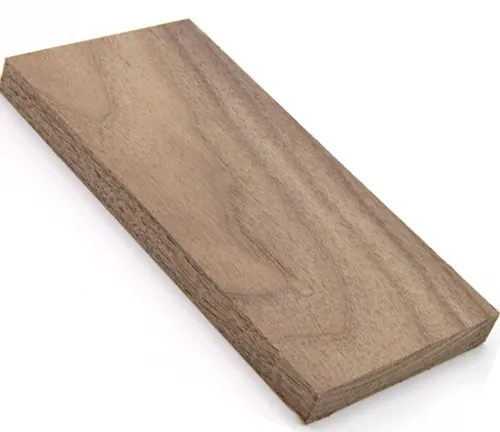
Teak
Teak is a tropical hardwood famous for its natural resistance to water and decay. This makes it perfect for outdoor furniture, boats, and decks. Teak has a warm, golden color and a smooth finish, which adds elegance to any outdoor space. It also requires minimal maintenance, as it can withstand harsh weather conditions.
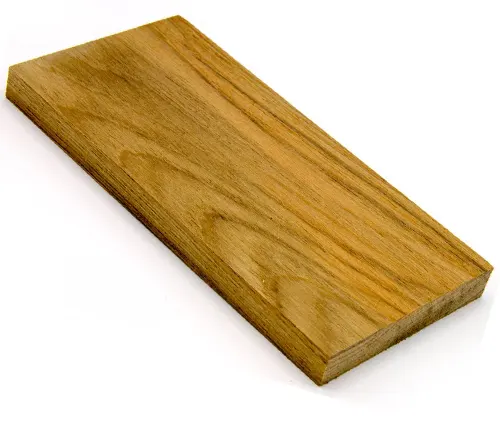
Hickory
Hickory is one of the toughest hardwoods available. It is known for its strength and shock resistance, making it ideal for tools, furniture, and flooring that need to endure heavy use. Hickory has a distinctive grain pattern and can be light or dark in color, adding character to any project.
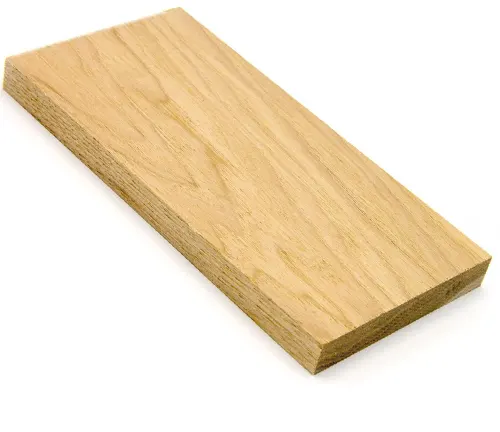
Birch
Birch is a light-colored hardwood with a fine, even grain. It is often used in furniture, cabinetry, and plywood. Birch is relatively easy to work with and takes stain well, making it a versatile choice for various applications.
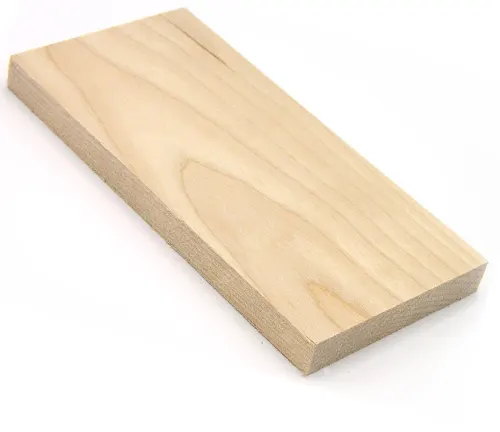
Ash
Ash is known for its light color and strong, flexible nature. It is often used in furniture, sports equipment, and tool handles. Ash has a straight grain and can be stained to achieve different looks, making it a popular choice for both functional and decorative items.
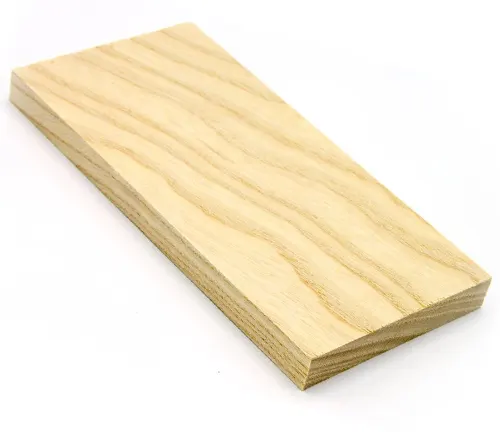
Each type of hardwood has its own unique qualities, making them suitable for different projects and styles. When choosing hardwood lumber, consider the specific properties and appearance you desire for your project.
Benefits of Hardwood Lumber
Choosing hardwood lumber for your projects comes with several advantages:
- Durability: Hardwoods are more durable than softwoods, making them suitable for high-traffic areas and long-lasting furniture. They can withstand heavy use without easily getting damaged.
- Aesthetic Appeal: Hardwoods offer a variety of colors and grain patterns, adding beauty to furniture, flooring, and decorative pieces. Their natural look can enhance the overall style of your home.
- Low Maintenance: Hardwood surfaces are easy to clean. Regular sweeping and occasional mopping are usually enough to keep them looking great, without the need for special cleaners.
- Repairability: Scratches and dents in hardwood can often be repaired by sanding and refinishing. This can restore the wood’s original appearance without needing to replace it.
- Increased Property Value: Installing hardwood floors or furniture can boost your property’s value. Many buyers prefer homes with hardwood features, seeing them as a premium option.
- Eco-Friendly Option: When sourced responsibly, hardwood lumber can be an eco-friendly choice. Many hardwoods come from sustainably managed forests, supporting environmental protection.
These benefits make hardwood lumber an excellent choice for anyone looking to create beautiful, durable, and lasting projects. Whether you’re building furniture, installing flooring, or crafting decorative items, hardwoods offer a reliable and attractive option.
Applications of Hardwood Lumber
Hardwood lumber is highly versatile and can be used in many different applications. One of the most common uses is in furniture. Many types of hardwoods, such as oak, maple, and cherry, are used to create high-quality tables, chairs, cabinets, and more. These pieces are not only durable but also add beauty to any room with their unique grain patterns and rich colors.
Another popular application is flooring. Hardwood flooring is favored in homes because it is strong and has a natural beauty that enhances any space. It can be found in living rooms, dining areas, and even kitchens. Additionally, hardwoods are often used in cabinetry for kitchens and bathrooms due to their strength and attractive appearance. Cabinets made from hardwood can withstand daily use while looking great.
Hardwoods are also commonly used in millwork, which includes moldings, trim, and other decorative features. These elements add character to homes and buildings. In the music industry, certain hardwoods are used to make musical instruments like pianos and guitars, thanks to their excellent acoustic properties. Other applications include making doors and windows, stairs, and even toys and crafts. With so many uses, hardwood lumber is a valuable material in both residential and commercial projects.
How to Maintain Hardwood Lumber
Proper maintenance is important to keep hardwood looking its best. Start by cleaning regularly—sweep or vacuum to remove dust and dirt. A soft-bristle broom or a vacuum with a brush head works well for this. It’s also important to avoid excess moisture, as water can damage hardwood. Instead of mopping with a lot of water, use a damp mop and dry the surface right away. Additionally, choose cleaners that are made specifically for hardwood to protect the finish.
Over time, hardwood surfaces may lose their shine. When this happens, sanding and refinishing can help restore their beauty. To prevent scratches, use furniture pads under heavy items and be careful not to drag furniture across the floor. Following these simple tips will help keep your hardwood looking beautiful for years to come.
Conclusion
Hardwood lumber is a premium material known for its strength, beauty, and versatility. Whether you’re building furniture, installing flooring, or crafting decorative items, hardwood offers a reliable and aesthetically pleasing option. Understanding the different types of hardwood, their characteristics, and how to properly maintain them is crucial for making informed decisions in your woodworking or construction projects. With proper care, hardwood lumber can last for generations, adding lasting value and elegance to your home or any project you undertake.
Frequently Asked Questions
1. What is the difference between hardwood and softwood?
Hardwood comes from deciduous trees that lose their leaves annually, while softwood comes from coniferous trees that usually have needles and cones. Hardwood is generally denser and more durable than softwood, making it ideal for high-traffic areas and projects requiring long-lasting materials.
2. Why is hardwood lumber more expensive than softwood?
Hardwood trees grow more slowly than softwood trees, which means they are less abundant and take longer to harvest. The density and durability of hardwood also contribute to its higher price. Additionally, the intricate grain patterns and rich colors of hardwood make it a desirable material, further driving up its cost.
3. What are the most common uses of hardwood lumber?
Hardwood lumber is commonly used in furniture, flooring, cabinetry, millwork, and musical instruments. Its durability and beauty make it a preferred choice for high-quality, long-lasting projects. Hardwood is also used in doors, windows, and decorative items due to its strength and aesthetic appeal.
4. How do I choose the right type of hardwood lumber for my project?
Choosing the right hardwood depends on the specific requirements of your project. Consider factors like the wood’s durability, grain pattern, color, and workability. For example, oak or maple may be suitable for flooring, while cherry or walnut could be better for fine furniture. Budget and availability should also be considered when selecting hardwood lumber.
5. Is hardwood lumber environmentally friendly?
Hardwood lumber can be an environmentally friendly option when sourced from sustainably managed forests. Many hardwoods come from certified sources that practice responsible forestry, ensuring the long-term health of the forest ecosystem. Using hardwoods that are sustainably harvested supports conservation efforts and reduces the environmental impact of wood production.
6. How can I maintain the appearance and longevity of hardwood lumber?
To maintain hardwood lumber, regularly clean it with a soft-bristle broom or vacuum with a brush head to remove dust and dirt. Avoid using excessive moisture; instead, use a damp mop and dry the surface immediately. Use hardwood-specific cleaners to protect the finish. If the wood loses its shine over time, sanding and refinishing can restore its original beauty.
7. Can hardwood lumber be used outdoors?
Certain types of hardwood, such as teak and white oak, are suitable for outdoor use due to their natural resistance to moisture and decay. These woods are commonly used in outdoor furniture, decks, and boat building. However, not all hardwoods are suitable for outdoor use, so it’s essential to choose a type that can withstand the elements.
8. What should I look for when buying hardwood lumber?
When buying hardwood lumber, check for quality by inspecting the wood for defects such as knots, splits, or warping. Look for a consistent grain pattern and uniform color. Ensure that the lumber is properly dried to prevent warping or shrinking after installation. Additionally, consider the wood’s origin to ensure it comes from a sustainable source.
9. Is it possible to repair damaged hardwood?
Yes, hardwood is highly repairable. Minor scratches and dents can often be repaired by sanding the affected area and applying a new finish. For more significant damage, such as deep gouges, wood fillers or professional refinishing may be necessary. Hardwood’s ability to be sanded and refinished multiple times is one of its key advantages over other materials.
10. Why does hardwood lumber vary so much in color and grain?
The color and grain of hardwood lumber vary depending on the species of the tree, its growth conditions, and how the wood is cut and processed. Each species has unique characteristics that contribute to its appearance. Environmental factors like soil quality, climate, and age of the tree can also influence the wood’s color and grain patterns, making each piece of hardwood lumber unique.

Edward Smith
Forestry AuthorWoodworking is about more than crafting; it's a harmonious connection with nature, mastering tools, and preserving our environment. I'm here to share my knowledge and experiences with you, forging a future where we can embrace wood's beauty and utility while safeguarding our forests' health and diversity.


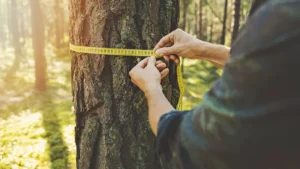
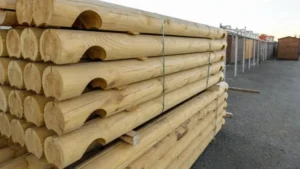
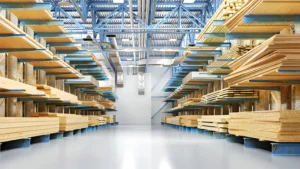
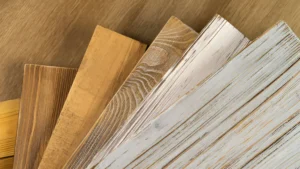
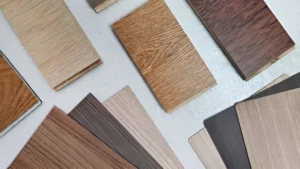
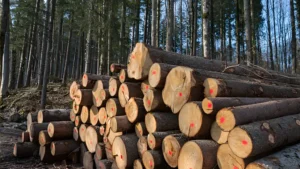
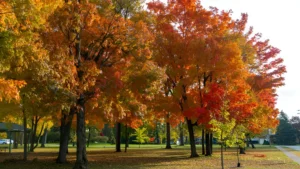
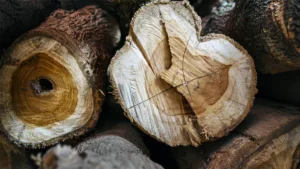
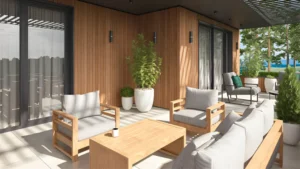
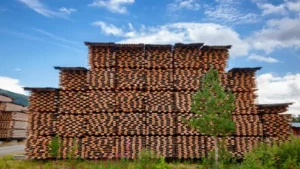
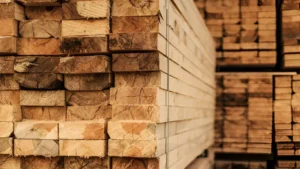
Leave your comment